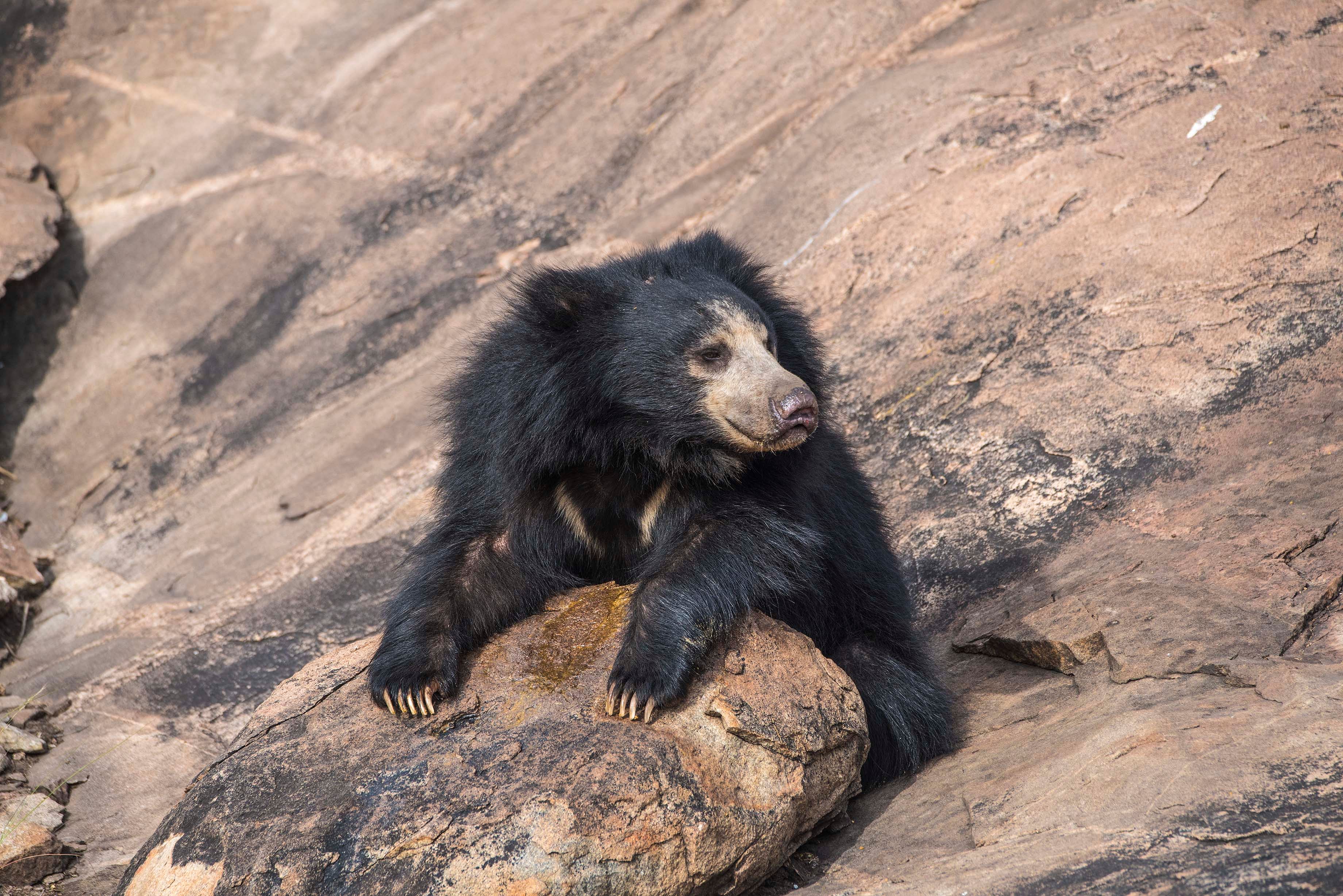
We were excited. In half a lifetime of travel across our intriguingly beautiful land, we have never captured a wild bear in our cameras. So, when a forest official in Bengaluru told us that photographing bears was a certainty in their own sanctuary, we took off.
We bumped along a rain-damaged, rutted road. The fields on both sides were tattered rugs between rocks and thorn scrub with the scrub winning over the fields long before we reached the dry-stone walls and arch of the Daroji Sloth Bear Sanctuary. (Forget the ‘sloth’: that’s a canard!)
Adult male bears could weigh up to 145 kg, rise to “6 ½ feet when standing on their hind legs… the species being short of sight and hard of hearing, are, more often than not, taken by surprise at sudden close encounters with humans. These are really dangerous moments when bears attack furiously in self-defence,” according to the forest department’s pamphlet on Daroji.
In numbers
In the sanctuary, trails wound through the thorn scrub and boulders, with euphorbia cactus thrusting up like green candlesticks from between the brown rocks, and fodder grass spreading in large green swathes. The whole 5.58 sq km of Daroji has about 100 bears, along with other animals which did not interest us on this trip.
We stopped at a small clearing in the thorny thickets of acacia. To our left was a rising outcrop of ochre-coloured boulders, piled one atop the other, with small, sloping terraces in between. A group of forest guards waited with buckets in their hands. Some of the buckets held sticky and sweet boiled rice, the others were filled with a treacle-like solution of gur and water. Bears have a ravenous sweet tooth and they raid wild beehives. Since honey is expensive, gur and water will have to do for this sloth bears’ picnic.
The forest guards spread out carrying their pails of goodies. They slopped the sweet rice in pudding-piles on the rocks, smeared other boulders with dripping, tacky, gur-treacle. They returned and stood near us. “Please don’t get out of the cars,” they advised. “The bears will come. They have a very keen sense of smell.”
At first, two hairy black shadows rose over the rim of the rocks. They grew into bristly heads with beady eyes. Then two bears emerged and shuffled down the rocks, snuffling and snorting. Three more appeared. And then a lone one. Our bears have long, hairless snouts, specially evolved to act as vacuum cleaners as they suck in termites from holes in white-ant mounds, ripped apart by the bears’ long, white talons. With six bears bustling around, it sounded like a yard of steam engines. They looked up, occasionally, stared at us, then reassured by the presence of their uniformed hosts, went back to their picnic.
Two of them, more venturesome than the others, stood up on their hind legs and sucked in the treacle dripping from a high boulder. They looked like humans in shaggy black coats; or like those mysterious man-like creatures reported from the wildernesses of the world: Bigfoot and Yeti and Sasquatch.
Close encounters
Our encyclopedia of Indian natural history said bears are unique among carnivores in being largely adapted to an omnivorous diet, subsisting in season upon wild berries and tree-nuts, as well as insects, root tubers and any rodents, young birds, or other vertebrates which they can catch.
A large male left his rice pudding and shuffled forward towards us. We felt a tingle run down our spine. He came close enough for us to see the ruff around his neck and his soft, brown eyes: as gentle as those of the world’s most feared terrorist. He looked speculatively at us for some time; one of the forest guards moved his long staff from his left hand to his right. The bear shifted his gaze as if assessing the threat posed by the guard. He then turned around slowly and went back to his pudding.
We had been holding our breaths and relaxed consciously. Then we noticed the birds. They were the size of partridges but not as tubby. They grazed fearlessly among the snuffling, shuffling bears: one even bustled between the legs of a large male to get at the scattered grains of rice pudding. “They’re painted spurfowl,” we were told: the short-sighted bears’ early warning systems.
Bears normally come out at night, but today, because of the heavy cloud cover, and the enticement of the picnic, they had decided to risk stepping out during the day. Now that the picnic was over, the six black bears turned around slowly, and began to shuffle away. We stood, gazing at them a little sadly till, eventually, as the old song had once predicted, “Our bears, went over the mountain, to see what they could see…”